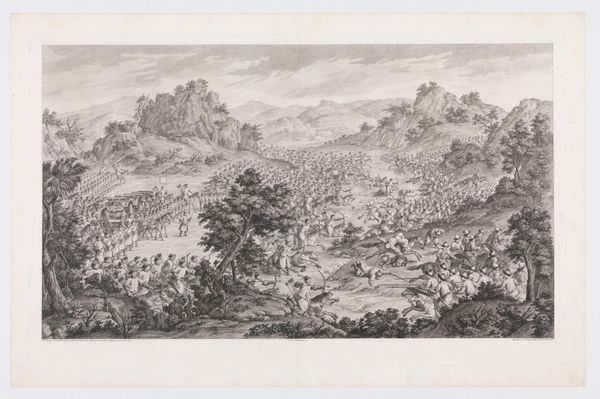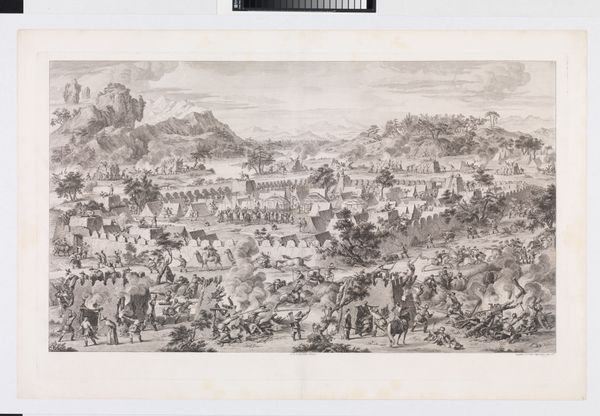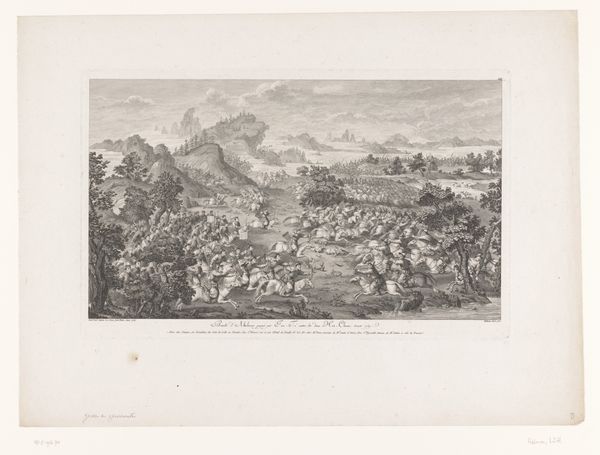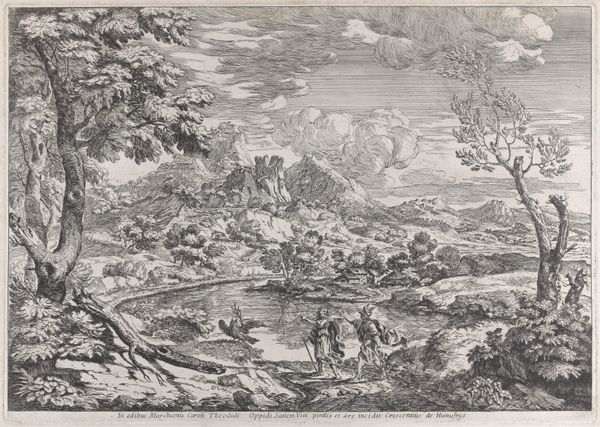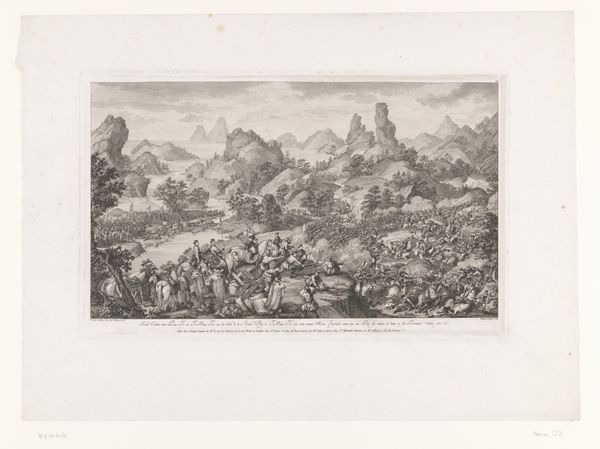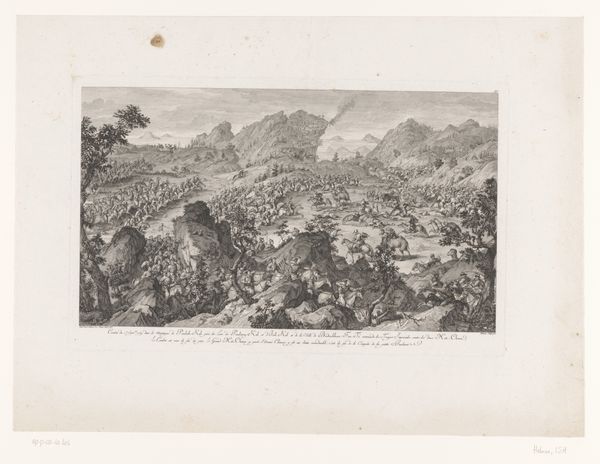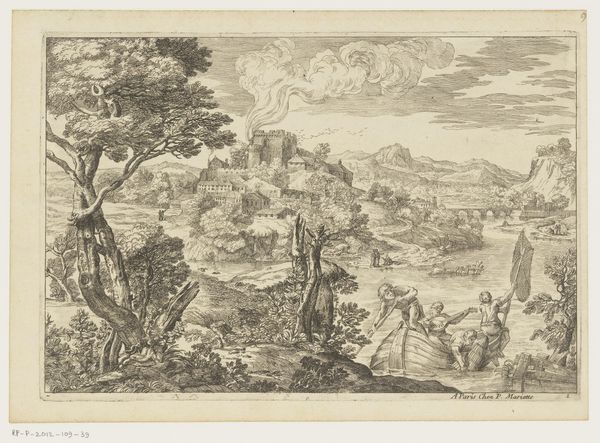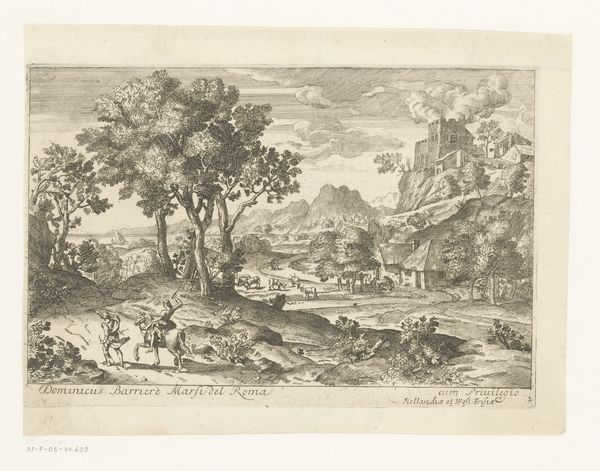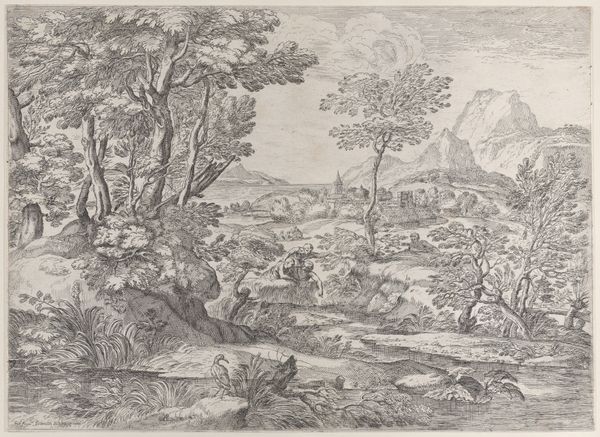
drawing, print, engraving
#
drawing
# print
#
landscape
#
figuration
#
soldier
#
horse
#
line
#
genre-painting
#
history-painting
#
engraving
Dimensions: Sheet: 39 11/16 × 25 11/16 in. (100.8 × 65.3 cm) Plate: 22 15/16 × 36 9/16 in. (58.2 × 92.8 cm)
Copyright: Public Domain
Editor: This is "The Combat of Khurungui," an engraving from 1774 by Jacques Aliamet, after a drawing. The sheer level of detail depicting the battle scene is pretty overwhelming at first glance. How do you interpret this work? Curator: Looking at Aliamet's engraving, I'm drawn to consider not just what's depicted, but *how* it was made and for whom. This image wouldn't exist without the labor involved: the engraver’s painstaking work with tools on a metal plate, the paper-making processes that produced the surface, and, critically, the socio-economic systems that allowed for the distribution and consumption of these images. Does it matter to you that this print could be widely distributed, compared to say, a unique painting? Editor: Absolutely. The reproducibility gives it a different kind of power, almost like propaganda. Curator: Exactly. This print normalizes, even romanticizes, war through detailed depictions, feeding the popular demand for exotic landscapes and accounts of faraway conflicts. Consider the accessibility facilitated by the relatively inexpensive material of the engraving: its accessibility shapes the consumption of this visual narrative and its wider meaning. How might this access shape perceptions? Editor: I see your point. It's easy to get lost in the landscape, but focusing on how it was produced and disseminated makes you realize how the artwork actively shapes public opinion. It's not just about the event; it is about managing perception of the conflict through a commodified print. Curator: Precisely. Shifting focus to the material reality challenges any pure reading of heroism or valor. It opens up crucial questions about the societal function and effects of the print. Editor: I never thought about approaching it that way. Thinking about the printing process and its distribution adds a layer of complexity that I completely missed before.
Comments
No comments
Be the first to comment and join the conversation on the ultimate creative platform.


